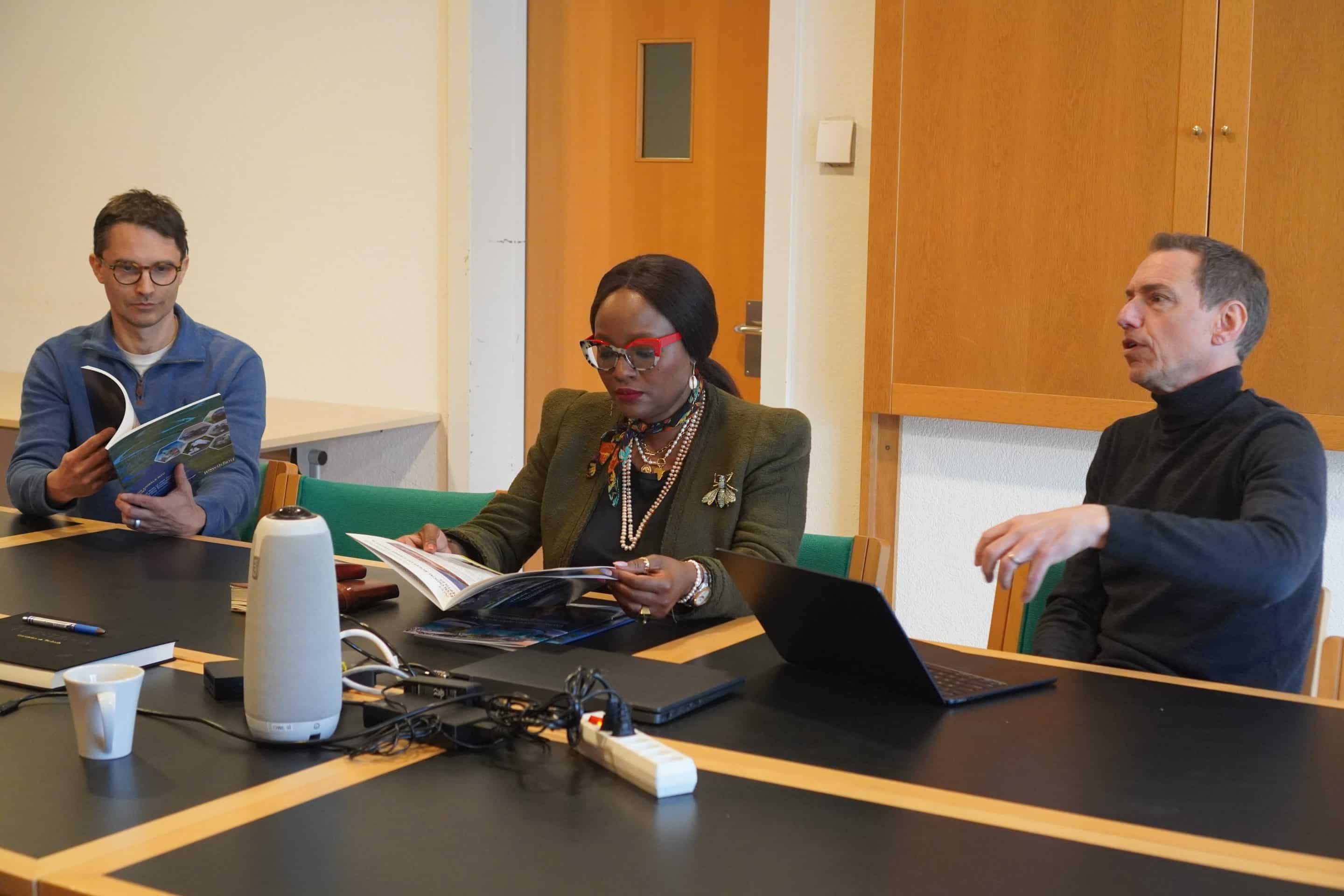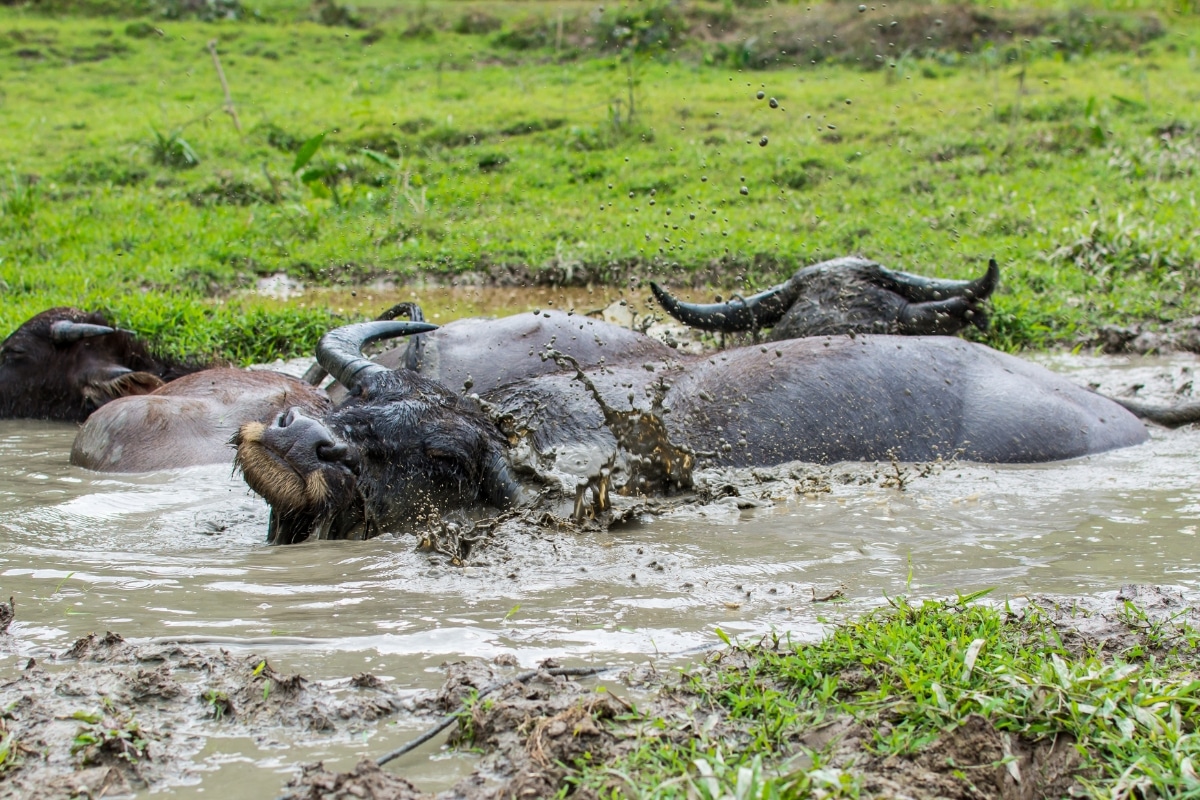Taking Animals Into Account’ to the Ramsar Convention on Wetlands
Featured — 2025-03-06

Partner Organisation: Ramsar Convention on Wetlands
Location: The Convention was adopted in the Iranian city of Ramsar in 1971 and came into force in 1975. Since then, almost 90% of UN member states, from all the world’s geographic regions, have acceded to become Contracting Parties.
On 4th March 2025, the team of the Global Rewilding Alliance met with the Ramsar Convention on Wetlands Secretariat for an official handover of the recently published report ‘Taking Animals Into Account’, a report on wetlands and wild animals.
It was a great pleasure to meet Dr. Musonda Munda, Secretary General, Jerker Tamelander, Director of Science & Policy, and Filip Aggestam, Scientific & Technical Officer, of the Ramsar Secretariat and hand over the report “Taking Animals into Account”. From the discussions it became clear that the rewilding perspective, in which wild animal species play a particularly critical role, is of high relevance for meeting the objectives of the Ramsar Convention on Wetlands.
The need for integrating the work of Ramsar with other global conventions, like the Convention on Migratory Species ( CMS), CITES and Convention on Biological Diversity (CBD), was highlighted. Rewilding is a direct response to meeting the global objective of creating “ecological integrity,” which is one of the founding principles (#7) of the 1992 Rio Earth Summit declaration on environment and development, to guide countries towards sustainable development. The concept of ecological integrity is also embedded in the CBD and the climate convention, UNFCCC.
The approach and information in the report could therefore serve as a start for Ramsar to move in that direction. By adopting a rewilding perspective and putting ecosystem functionality and “ecological integrity” at the heart of its agenda, the Convention could become a pioneer in the global conservation community.
From the Global Rewilding Alliance (GRA), we are looking forward to embarking on the road to Victoria Falls, Zimbabwe, and the 15th meeting of the Ramsar Conference of Parties (COP15) 23rd – 31st July 2025. We welcome those attending to reach out to our team, as we will be learning from meeting delegations from the 172 member states (contracting parties) and the NGO community from different parts of the world. Our plan is to present a special follow-up report on Africa, as the continent with the most intact ecosystems on our planet. This will be done in partnership with the growing network of organisations of the GRA.
A special thanks to Magnus Sylven, our Director of Science-Policy-Practice, and our Chairman, Mark Halle, for presenting the report.
A thanks to the co-authors and contributing partner of the report itself: Magnus Sylven and Chloe Eckert | Sebastián Di Martino and Emiliano Donadio at Rewilding Argentina | Nachiket Kelkar and Anish Andheria at Wildlife Conservation Trust | Leo Linnartz at ARK Rewilding Nederland | Mario Cipollone at Rewilding Apennines | Henrik Persson at Rewilding Sweden | Sophie Ramsay and Nonie Coulthard at Bamff Wildland | Mykhailo Nesterenko at Rewilding Danube Delta | Russell Gray at Re:wild | Samir Kumar Sinha at Wildlife Trust of India | Robert Needham at Beaver Trust.
Please discover more about the report in this article, or access the report directly via the following links:

Ramsar Convention on Wetlands
The Ramsar Convention on Wetlands is an international treaty for the conservation of wetlands of all kinds, notably the 2,531 ‘Ramsar sites’ – that is, designated wetlands of international importance that cover over 2.6 million square kilometres.
The Convention was signed in 1971 and is named after the city in which this took place: Ramsar in Iran.
Every three years, representatives of the 172 contracting parties meet as the Conference of the Contracting Parties ( COP), the next being COP15 this year in July. The 15th meeting of the parties will be held in Victoria Falls in Zimbabwe (our team will be attending – get in touch if you are too!).
The Convention’s mission is “the conservation and wise use of all wetlands through local and national actions and international cooperation, as a contribution towards achieving sustainable development throughout the world”.
As you will see in our report, the Convention uses a broad definition of wetlands. It includes all lakes and rivers, underground aquifers, swamps and marshes, wet grasslands, peatlands, oases, estuaries, deltas and tidal flats, mangroves and other coastal areas, coral reefs.
Under the “three pillars” of the Convention, the Contracting Parties commit to:
- work towards the wise use of all their wetlands;
- designate suitable wetlands for the list of Wetlands of International Importance (the “Ramsar List”) and ensure their effective management;
- cooperate internationally on transboundary wetlands, shared wetland systems and shared species.
Our report, Taking Animals Into Account intends to improve the protection and effective restoration of these all important ecosystems, particularly by highlighting the crucial roles of the wild animals that inhabit, shape and depend on them.
Summary of Taking Animals Into Account & Case studies:
Taking Animals into Account reveals how wild animals play an underestimated but vital role in keeping the world’s wetlands functional and resilient. Through 11 case studies, the study outlines impactful evidence that reintroducing and protecting key wild animal species could be a game-changer in tackling climate change, biodiversity loss, invasive species control, and water security challenges.
Taking Animals into Account underscores the urgent need to rewild both inland and coastal wetlands by restoring the wild animal species that keep these wetland ecosystems thriving.
Amid a global decline in wildlife and a lack of adequate recognition of wild animals in conservation policies, the new insights of the study outline an opportunity for more effective wetland restoration and conservation; a new ‘way forward’ that recognises the essential role of wild animals.
These detailed case studies from our alliance partners highlight diverse strategies and outcomes across the globe, showcasing the extensive and impactful work being done to restore and conserve natural habitats. By reintroducing key species and restoring habitats, our partners have taken significant steps towards reversing biodiversity loss and enhancing ecosystem services that benefit both nature and humanity.
While this study represents only an initial effort to summarize current knowledge on wildlife-ecosystem connections for wetlands, the results underscore the need to place wild animal species at the core of the ecological functional agenda of the Ramsar Convention on Wetlands.


Director of Communications – GRA membership, partnerships, communications strategy.

More from this category:
